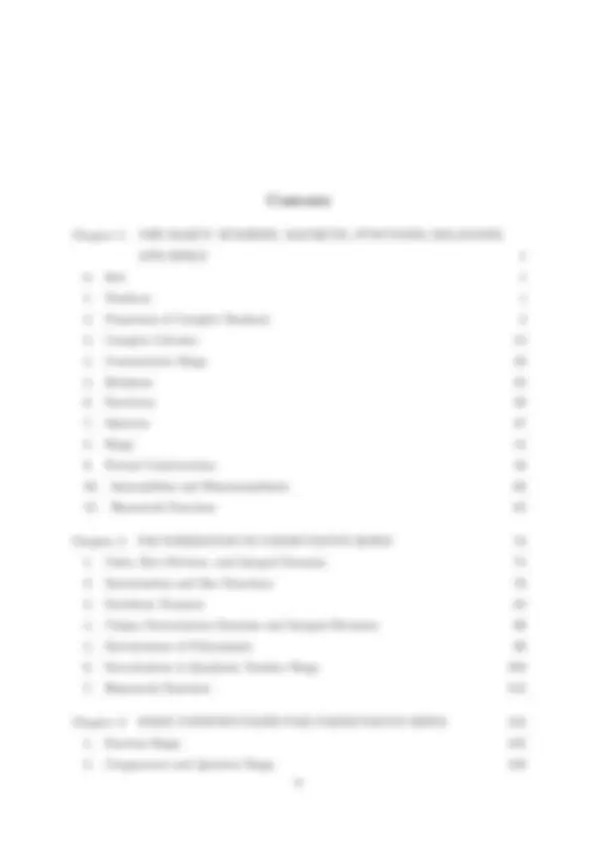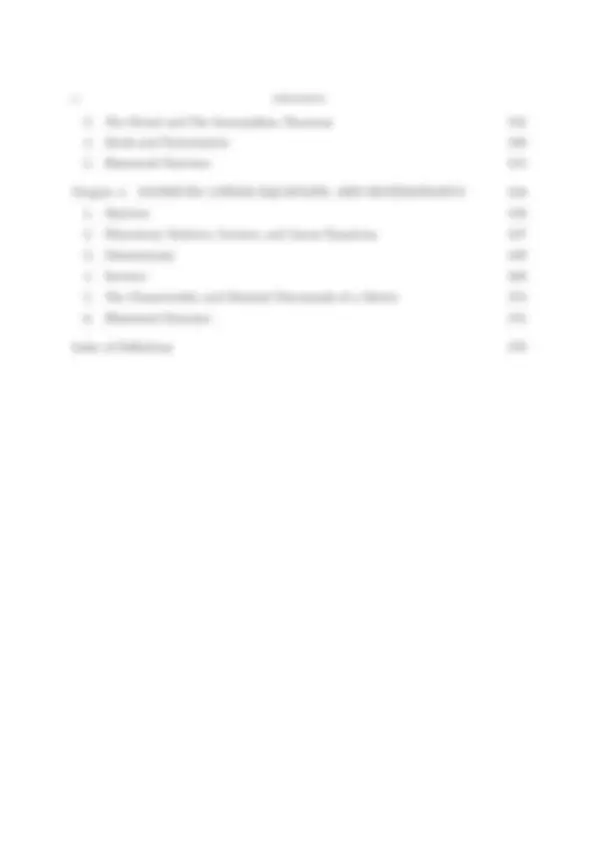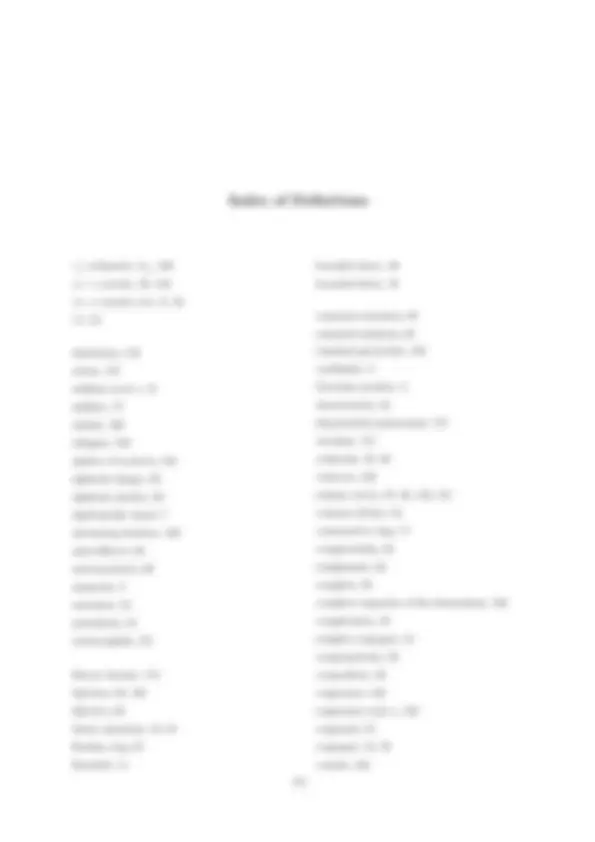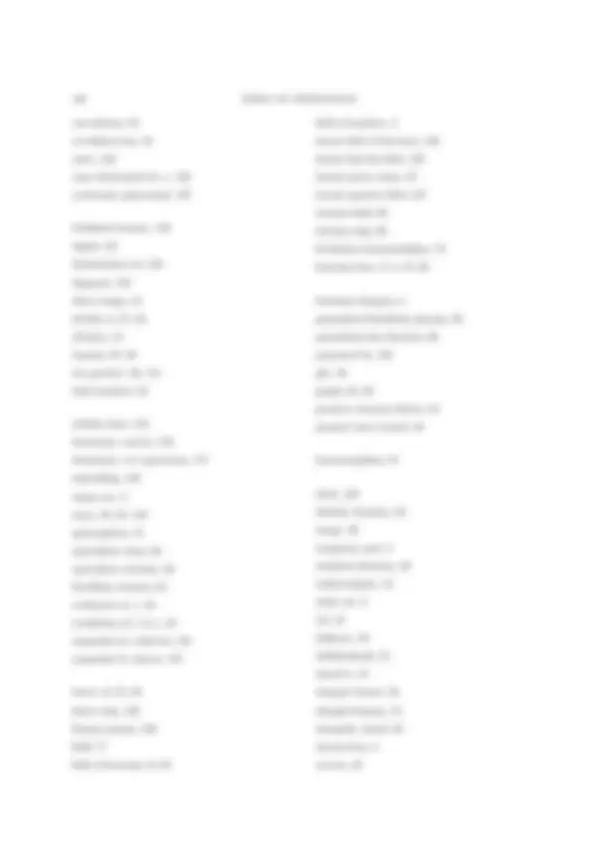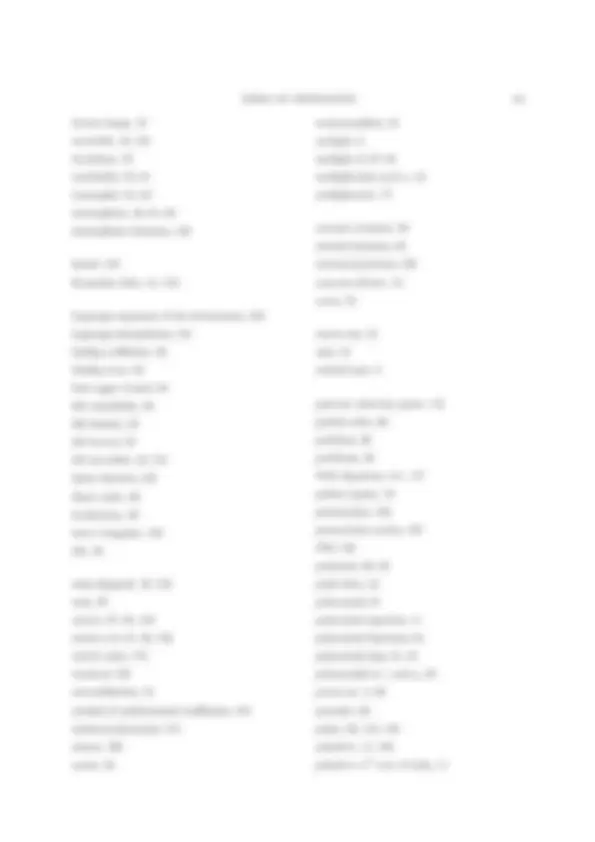Partial preview of the text
Download The Basics: Numbers, Matrices, Functions, Relations and Rules | MATH 631 and more Assignments Algebra in PDF only on Docsity!
MATH 631/632: MODERN ALGEBRA
University of Wisconsin–Milwaukee
2001 draft Printed December 4, 2001
Allen D. Bell
adbell@uwm.edu
These notes constitute an introduction to modern algebra. They are meant to be used
in tandem with my lectures. They follow the same general perspective as the lectures,
but they are not identical to the lectures. Sometimes I skip material in the notes; other
times I discuss material in class that is not in the notes, or treat the material at greater
depth in the lectures. No two presentations of the same subject are identical, even those
by a single person!
There are a number of books covering similar material, but none cover exactly the
same ground. If you wish to look at a reference book, I recommend the book Algebra by
Michael Artin. If we have occasion to refer it, we will call it Artin.
The first three chapters deal mainly with the theory of commutative rings, a gener-
alization of numbers. The first chapter is a catch-all reviewing and introducing material
about sets, numbers, functions, relations, arithmetic mod n, and polynomials. It also
contains the definition of a commutative ring, and the first abstract tools for dealing with
algebraic objects: homomorphisms and isomorphisms.
The second chapter deals with the topic of factorization into irreducible elements
(primes) in integral domains – we introduce the notion of a Unique Factorization Domain.
The theory is developed in the abstract for rings that possess a size function and a division
algorithm, and concretely for polynomial rings and rings whose elements have the form
a + b√n for integers a, b, n. The former rings give an introduction to some of the tools of
Algebraic Geometry, while the latter rings introduce us to some of the tools of Algebraic
Number Theory.
The third chapter deals with abstract constructions: the field of fractions of an integral
domain and the quotient ring of an arbitrary commutative ring modulo an equivalence
relation or an ideal. In this chapter we develop some basic facts about ideals, and introduce
the notion of a Principal Ideal Domain.
There are problems scattered throughout the notes for the reader to ponder, and there
are more homework problems at the end of each chapter. (These vary a lot in difficulty,
from routine to some I’m not sure of the answer to.) To these you should add whatever
questions occur to you while reading. In addition, not all proofs are given, and even when
Index of Definitions

